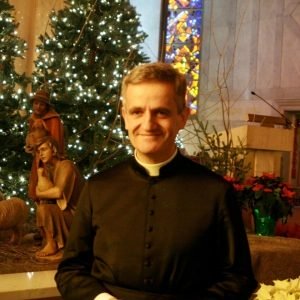Found this article today and its worthwhile because its my Parish...
...While some of the restoration consists of long-overdue maintenance and upkeep (roof repair, ventilation, etc.) much of the attention focuses on undoing the 1960s-era damage. Anyone who appreciates the preservation of Milwaukee’s well-documented architectural heritage can be grateful to the Institute of Christ the King for this endeavor. By taking this corrective measure, the Institute is giving back to Milwaukee’s future generations of Catholics and non-Catholics a priceless piece of their old-world heritage.
Ever since then-Archbishop Timothy Dolan gave the parish over to the care of the Institute of Christ the King in 2007, the Oratory of Saint Stanislaus has served as one of the very few parishes in Milwaukee where the traditional, 1,500+ year-old Latin Mass is offered on a daily basis. The parish is a growing bastion of tradition and beauty. No folksy guitar music and schmaltzy hymns here. While rooted in ancient liturgical tradition, and perhaps because of this, young Catholics are drawn to Saint Stanislaus in considerable numbers. At a time when it’s “in” to be unconventional (think Milwaukee’s East Side) Saint Stanislaus’ counter-cultural modus operandi is, without a doubt, a huge part of its appeal among the younger generation. In a paradoxical kind of way, the seemingly nonconformist approach to liturgy at Saint Stanislaus is rooted in centuries-old rituals, which the younger crowd sees as something new, and beautiful. The parishioners understand well what Pope Emeritus Benedict XVI once wrote: “The more priests and faithful humbly surrender themselves to this descent of God [at liturgy], the more ‘new’ the liturgy will constantly be, and the more true and personal it becomes.”
I recently met with the rector of the parish, Canon Benoît Jayr, a native of Montauban, France, who has been at Saint Stanislaus since 2011. He filled me in on the particulars of the fascinating restoration project currently underway at the parish. He showed me old photos dating from the golden age of Saint Stanislaus, which now serve as invaluable reference points for the ongoing work. We also discussed parish life, the allure of the Latin Mass, the importance of tradition, and his Montauban-to-Milwaukee transition.
What is the driving motivation behind the renovations at Saint Stanislaus? Some might say, “What’s the point?” Is this just about one’s aesthetic preference over another’s?
We have a beautiful Polish inheritance here and, I believe, we have a solemn duty to preserve that patrimony. The continuity and preservation of these traditions, even in terms of architecture, are extremely important for the missionary impact of Saint Stanislaus, which is, of course, the conversion of souls. The parish building itself is well-known. Visitors who arrive at Mitchell International Airport will see the church recreated, along with other famous Milwaukee buildings, in a colorful floor mosaic. So already, the church greets visitors even before they see the actual building. We can also say that the building itself is a tool for evangelization, and not just a historical building. When talking about the decision to restore the original integrity of the interior I must add that many of the 1960s renovations are totally opposed to the basic architectural style of the original building. Anyone will notice that the modern windows and the renovated sanctuary, for example, are not congruous with the original design.
In your view, what was the reason why so many of these radical and financially exorbitant renovations took place in Catholic churches across America in the 1960s and after? For example, what inspired the removal of altar rails?
In the Church, and in society in the 1960s, we saw a big desire to change everything. It was a time of great turnover, we could say, and of innovation. The scope of such renovations in church buildings was allegedly to give more dynamism. It was supposed to represent a new spring for the Church. But this season was disappointing, as the promised fruits did not show up....
Read the rest of the great article and interview at Cream City Catholic!


your welcome, thanks for stopping by
ReplyDelete